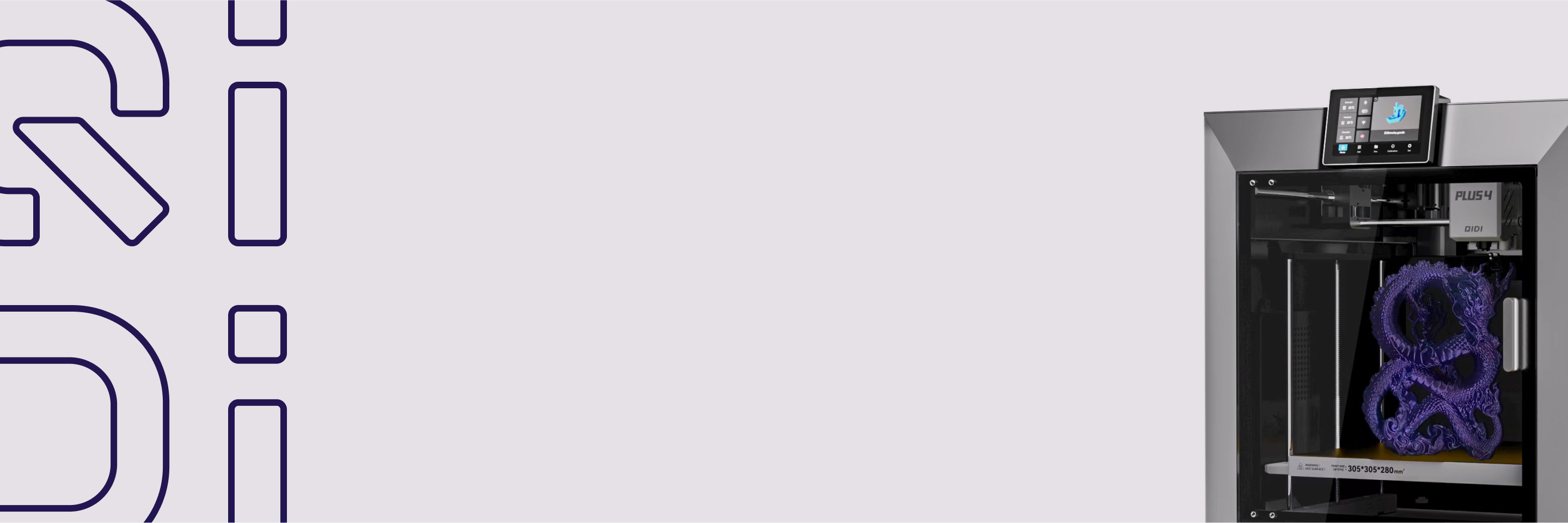An bhfuil ABS nó PLA níos fearr do phriontáil 3D?
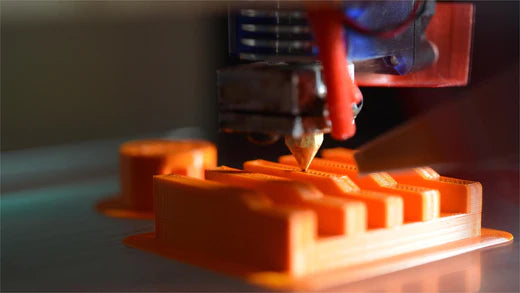
Tá díospóireacht theasaí spreagtha ag an gceist maidir le ABS vs PLA i measc lucht priontála 3T le blianta anuas de réir mar a théann samhaltú taiscthe comhleáite i bhfeidhm go príomhshrutha. Tugann an dá theirmeaplaistigh choitianta seo buntáistí, bíodh siad neart, cuma, airíonna teirmeacha, inphriontálacht nó sábháilteacht. De réir mar a leathnaíonn an glacadh trasna tionscail, Tá sé ríthábhachtach tuiscint a fháil ar phríomhdhifríochtaí chun meaitseáil a dhéanamh tréithe filiméid le spriocanna iarratais. Trí mheasúnú a dhéanamh ar riachtanais bheachtais, ar thimpeallachtaí táirgthe, ar astaíochtaí, agus ar éilimh fheidhmiúla ó fhréamhshamhlacha go páirteanna úsáide deiridh, is féidir le dearthóirí leas a bhaint as buntáistí comhlántacha an dá ábhar nó díriú ar a ndícheall áit a bhfuil ceann amháin níos fearr ná an ceann eile. Léiríonn an treoir seo na sonraí atá taobh thiar de roghnú plaisteach níos cliste.
Comparáid Thapa idir ABS agus PLA i bPriontáil 3D:
| Gné | ABS | PLA |
|---|---|---|
| Neart & Marthanacht | Dianacht ard-thionchair, neart teanntachta maith, friotaíocht cheimiceach measartha | Friotaíocht tionchair níos ísle, ach is féidir í a fheabhsú le comhchodanna |
| Inphriontálacht & Beachtas | Go maith ag teochtaí níos ísle sa soic, cruinneas beagán níos fearr | Níos éasca le priontáil, níos maithiúnaí, níos lú seans maith go mbeidh sé casta |
| Éasca le hÚsáid | Éilíonn sé leaba agus imfhálú téite mar gheall ar chasadh, astaíonn múch | Priontaí go maith ar dhromchlaí éagsúla, boladh íosta, níos lú fadhbanna saobhadh |
| Inbhuanaitheacht | Bunaithe ar pheitriliam, níos lú neamhdhíobhálach don chomhshaol, ní féidir é a mhúiríniú | In-bhithmhillte, déanta as acmhainní in-athnuaite cosúil le stáirse arbhair |
| Costas | Meánphraghas níos airde ná PLA caighdeánach | Go ginearálta níos saoire, bíonn cineálacha speisialtachta níos costasaí |
| Airíonna Teirmeacha | Friotaíocht teasa níos fearr suas le thart ar 105°C | Níos boige os cionn 60°C, ní oiriúnach d'fheidhmchláir ardteochta |
| Sábháilteacht | Scaoileann sé gás stéiréine nuair a théitear é, teastaíonn aeráil uaidh | Níos lú astaíochtaí díobhálacha, níos sábháilte le húsáid faoi dhíon |
| Feidhmchláir | Oiriúnach do chodanna feidhmiúla a bhfuil marthanacht agus friotaíocht teasa ag teastáil uathu | Is fearr le haghaidh fréamhshamhlacha, samhlacha neamhfheidhmiúla, agus feidhmchláir íseal-struis |
| Aeistéitic | Is féidir bailchríoch réidh a bhaint amach le teicnící smúdála gaile | Glacann sé le péint go héasca agus is féidir leis breathnú go hiontach le hísealphróiseáil iar-phróiseála |
Príomhthréithe ABS agus PLA
1. Cad is ABS ann i bPriontáil 3D?
Aicrilonítríle bútaidé-éin stéiréin (ABS) léiríonn an clasaiceach Priontáil FDM ábhar, a úsáideadh ó bunaíodh an teicneolaíocht breis agus 30 bliain ó shin. Cuireann an plaisteach peitriliam-bhunaithe seo ar fáil:
- Neart & Marthanacht: Léiríonn ABS ard-dianacht tionchair, neart teanntachta agus solúbthacht, chomh maith le friotaíocht mheasartha teasa agus ceimiceach. Oireann a athléimneacht d'fheidhmchláir fheidhmiúla.
- Priontáil Ard-Mhionsonraí:A bhuí leis an gcumas priontáil ag teochtaí níos ísle sa soic, is féidir cruinneas agus gnéithe casta níos fearr a bhaint amach i gcomparáid le hábhair eile.
- Coitiantacht an Tionscail: Tá ABS le fáil i ngach áit go háirithe i réimse na ngluaisteán, fearas tomhaltóra agus dearadh táirgí le blianta fada anuas.
2. Cad is PLA ann i bPriontáil 3D?
Aigéad polalachtach (PLA) soláthraíonn sé rogha eile atá ag éirí níos coitianta.Mar phlaisteach bithbhunaithe a dhíorthaítear ó amhábhair orgánacha cosúil le stáirse arbhair nó cána siúcra, cuireann PLA ar fáil:
- Éascaíocht Priontála: Priontálann PLA go réidh trasna teochtaí nozzle agus boladh íosta á astú aige agus fadhbanna casta foircneacha a bhaineann le ABS á seachaint. Cuireann sé seo ar chumas priontaí níos simplí.
- Sábháilteacht:Táirgeann PLA i bhfad níos lú múch díobhálach, rud a chuireann deireadh leis an ngá atá le himfháluithe aeráilte tiomnaithe ABS le linn priontála.
- Inbhuanaitheacht: Tá PLA in-mhúirínithe tarraingteach ó thaobh na hinbhuanaitheachta comhshaoil de toisc go n-éiríonn le dramhaíl bithdhíghrádú go héasca thar mhíonna seachas céadta bliain.

Cruinneas Priontála
Is frustrachas mór a bhíonn roimh dhíograiseoirí nua priontála 3T ná priontaí tástála tosaigh a théann amú. Is gearán coitianta iad coirnéil chasta, braoiníní snáithín, agus toisí atá i bhfad lasmuigh de na luachanna ionchais. Nuair a bhíonn tionchar ag mionsonraí beaga ar d’iarratas, is féidir le cruinneas agus beachtas díospóireachtaí ábhartha a threorú ó thús an tionscadail.
1. Calabrú Ceart an Phrintéara
Cé go bhfuil sé in ann réiteach suntasach a bheith aige agus na socruithe is fearr thíos á gcur san áireamh 100 micrón (0.1mm), braitheann cruinneas fíorshaoil ar ullmhú cúramach an phrintéara. Ó leibhéalú pláta tógála agus coigeartuithe bearna soic go comhsheasmhacht filiméid agus calabrúcháin ráta sreafa, feidhmíonn crua-earraí diailithe mar an seicphointe cruinnis is tábhachtaí roimh teorainneacha ábhartha a chur i gcomparáid.
2. Riachtanais Réitigh
Tá ról teoranta ag castacht na bpáirteanna freisin, neamhspleách ar neart teirmeaplaisteach. Mar shampla, D’fhéadfadh ABS ligean do chainéil chasta 40-micrón sreabhadh a dhéanamh faoi thairseach níos ísle 60-micrón PLA., ach sáraíonn an taifeach hipitéiseach sin go leor cumais soic printéara ar dtús. Sainmhínigh toisí agus lamháltais riachtanacha ag baint úsáide as do chrua-earraí atá ar fáil mar bhunlíne sula ndéantar measúnú ar roghanna.
3. Airíonna Ábhartha
Tugann sonraí díoltóirí le fios go bhfuil buntáiste beag cruinnis ag ABS, agus é in ann píosaí agus tionóil úsáide deiridh a phriontáil laistigh de lamháltas toisí 0.5mm. Bíonn claonadh ag priontaí PLA i dtreo lamháltais 200 micrón ar chórais tráchtála mar gheall ar slaodacht mhéadaithe agus crapadh a bhaineann le fuarú. Fabhraíonn sé seo ABS le haghaidh comhpháirteanna atá oiriúnach go docht cosúil le hailt snap. É sin ráite, is féidir le roinnt teicnící iarphróiseála cruinneas a fheabhsú nuair a éilíonn na riachtanais.
Anailís Costais agus Foinsithe
Cuireann costais snáithín le chéile le linn sreafaí oibre fada fréamhshamhlaithe agus táirgthe. Cé nach fadhb airgeadais í seo ina haonar, is féidir le tuiscint ar phraghsáil agus ar fhoinsiú pleanáil a shruthlíniú ar scálaí níos mó.
1. Comparáid Costais Filiméid
Díoltar filiméid chaighdeánacha PLA ar thart ar $20 in aghaidh an spóil 1kg ó fhoinsí tionsclaíocha. Téann meascáin speisialtachta agus comhchodanna ina bhfuil líonadh nó breiseáin níos airde chun neart agus solúbthacht fheabhsaithe níos gaire do $30 an kg.
Meánlíon filiméid ABS beagán níos airde ag $22-35 in aghaidh an kg ag brath ar íonacht agus ar phróisis déantúsaíochta. Is iad na hábhair táirgthe is mó a chaitear, Laghdaíonn ceannach mórchóir praghsanna ABS faoi bhun chomhchodanna PLA préimhe i gcainníocht mhaise.
2. Roghanna Foinsithe agus Infhaighteacht
A bhuíochas le glacadh forleathan i ndéantúsaíocht bhreiseán agus i dtionscnaimh bhithphlaisteacha, cuireann formhór na soláthraithe ar líne cineálacha éagsúla ábhar PLA ar fáil ar éileamh le loingseoireacht dhomhanda cost-éifeachtach ó na príomhtháirgeoirí filiméid go léir. Cé nach bhfuil PLAanna speisialtachta á stocáil ag níos lú siopaí brící agus moirtéal go háitiúil, coinníonn rochtain fhorleathan ríomhthráchtála meascáin roghnaithe ar fáil go tapa ar do dhoras.
Éilíonn rochtain ar ABS roghnú cúramach soláthraithe, toisc nach bhfuil an oiread sin déantóirí ag freastal ar rith táirgeachta i bhfianaise cheannas PLA sa mhargadh. Is minic a thógann amanna luaidhe le haghaidh meascáin ABS speisialtachta a tháirgeadh ar ordú 1-3 seachtaine.Seiceáil monaróirí an bhfuil filiméid ABS ar fáil sula bhfoinsíonn tú an t-ábhar nideoige.
Éasca le hÚsáid agus Priontáil á déanamh
Cuir ceist ar aon duine a bhfuil taithí aige ar phriontáil 3D chun a dtaithí úsáideora is frustraí a insint - is dócha go ndéanfaidh siad cur síos air priontaí nár éirigh leo le sraitheanna casta agus scafa i measc scealptha ABS scaipthe. Tá íogaireacht mheon ag cur as do ABS, agus éilíonn sí rialuithe comhshaoil dírithe. Foghlaim próisis a chuireann le rath an chéad phriontála.
1. Greamaitheacht Leapa a Fháil i gCeart
Cuireann solúbthacht mhaithiúnach PLA greamaitheacht láidir leapa ar fáil trasna dromchlaí cosúil le téip, bileoga PEI, nó gliú ag teochtaí nozzle idir 185° - 220°CTeastaíonn leapacha priontála téite suas le 110°C ó ABS, rud a fhágann go bhfuil cur amú fuinnimh agus guaiseacha dóiteáin ann mura bhfuil rialuithe uathoibrithe ann.
2. Cosc a chur ar Fhadhbanna Saothraithe
Is minic a tharlaíonn saobhadh ABS freisin mar teas níos airde sa soic (230°C+) Buaileann sé le haer fionnuar comhthimpeallach, agus seasann teochtaí priontála níos ísle PLA i gcoinne an saobhadh seo. I measc na roghanna um chosc castachta chun greamaitheacht ABS a fheabhsú tá imfhálú seomra nó sreabhadh aeir rialaithe timpeall an limistéir phriontála.
Chun dul i ngleic le saobhadh i bpriontaí ABS, roinnt brandaí printéir 3D FDM ardchaighdeáin, amhail Teicneolaíocht QIDI, tá gnéithe ardleibhéil comhtháite acu cosúil leis an "Téamh Gníomhach Seomra le haghaidh Teocht RialaitheRialaíonn an córas seo an teocht laistigh den seomra priontála go cúramach, ag cothabháil timpeallacht chomhsheasmhach a laghdaíonn fadhbanna castachta go suntasach.
3. Ag cur an Fhachtóir Deataigh san áireamh
Idir an dá linn, scaoileann téamh plaisteach ABS go teochtaí leachtaithe i bhfad níos mó múch géar ná boladh lag PLA le linn priontála. Cuireann an gá le himfháluithe aerála tiomnaithe nó breiseáin scagacháin, trealamh sábháilteachta as líne, costais oibriúcháin, agus trioblóidí glantacháin bac ar úsáid ócáideach ABS in oibríochtaí 3D deisce gan an bonneagar sin i bhfeidhm.

Neart na gCodanna Clóite
Caithfidh rudaí críochnaithe strusanna réasúnta a bhfuiltear ag súil leo laistigh de thimpeallachtaí feidhmchláir a sheasamh - ach an bhfuil difríocht idir na hábhair ó thaobh airíonna meicniúla feidhmiúla de?
1. Feidhmíocht Tionchair agus Teanntachta
Cinneann tástálacha turraing agus teannais caighdeánacha tionscail Soláthraíonn ABS friotaíocht tionchair 2-3x i gcomparáid le priontaí PLA, ag seasamh suas le 15-20kJ/m² roimh scoilteadh. Cuireann sé seo cosc ar bhriseadh faoi thitim agus imbhuailtí measartha. Dúnann comhchodanna PLA treisithe bearnaí marthanachta i raonta gar do ABS, ach meánlíonn PLA caighdeánach 4-6kJ/m² tairseacha tionchair trí chomparáid roimh snapáil.
2. Cáilíochtaí Teirmeacha Faoi Ualach
Léiríonn timpeallachtaí gléasanna dúnta freisin go gcoinníonn ABS neart níos airde ná PLA idir -20°C agus 80°C. De réir mar a athraíonn teochtaí oibriúcháin, ní dhéanann ABS ach éirí níos doichte agus bogann agus dífhoirmíonn PLA de réir a chéile os cionn 60°C+. Cuir dálaí aeráide oibriúcháin san áireamh i réamh-mheastacháin feidhmíochta ábhair.
Cáilíochtaí Aeistéitiúla Inmhianaithe
Ar thaobh feidhme de, is féidir le droch-chríoch dromchla nó trédhearcacht nach dteastaíonn cur isteach ar fheidhmchláir aeistéitiúla Priontáil 3D san ealaín, ailtireacht, agus réimsí dearaidh thionsclaíoch ina bhfuil an chuma ríthábhachtach. Cén chaoi a gcruachálann na príomhghnéithe suas le foirgnimh áille?
1. Strata a Réidhiú: Sraitheanna Infheicthe a Íoslaghdú
I bhfoirm amh neamh-mhillte, Cuireann ABS sraitheanna priontála infheicthe beagán níos míne ar fáil díreach ón nozzle a bhuíochas le rátaí fuaraithe níos tapúla a chuireann cosc ar línte sraithe suntasacha a bheith ag cur isteach ar dhromchlaí PLA ingearacha.Mar sin féin, A bhuí le teicnící éagsúla smúdála gaile, is féidir leis an dá ábhar aeistéitic lonrach mhúnlaithe insteallta a bhaint amach sa deireadh nuair is gá sin iar-léiriúcháin.
2. Bunphéintéireacht le haghaidh Péinteáil: Roghanna Cruthaitheacha a Chumasú
Ar phlaistigh amh, Glacann PLA le péintéireacht agus iarphróiseáil chruthaitheach cosúil le gal aicéatón a smúdáil níos fearr ná ABS, a mbíonn claonadh ann greamaitheacht péint spraeála a dhiúltú gan ullmhúchán dian gainimh ar dtús. Ní thagann aon cheannasacht chun cinn anseo. Sásaíonn ceachtar ábhar riachtanais chruthaitheacha le sreafaí oibre cuí.
Teorainneacha Teirmeacha Feidhmiúla
Cibé acu fréamhshamáirí imfhálú saincheaptha i mbaisceanna beaga nó tionóil mhóra líne táirgeachta atá i gceist, is é tuiscint ar iompraíochtaí teirmeacha a chinneann feidhmeanna oiriúnacha do theirmeaplaistigh araon i dtimpeallachtaí téite sa saol réadúil.
1. Sainmhíniú ar Fhriotaíocht Teasa
Ag glacadh leis gurb iad na dálaí atmaisféaracha comhthimpeallacha meánacha an chúlra oibriúcháin, bíonn meán-thréimhseacht gloine de thart ar 60 ̊C ag PLA sula ndéantar dífhoirmiú air. Cuireann an uasteorainn theirmeach seo teorainn le feidhmeanna cosúil le soithí leachtacha te nó páirteanna beaga innill a bhíonn ag tabhairt aghaidh ar theocht mheasartha faoin gcochall.
Idir an dá linn, Cuireann ABS teocht trasdula gloine de 105 ̊C ar fáil ar an meán., ag leathnú indéantachta do chórais uisce te, trealamh próiseála bia, agus timpeallachtaí áirithe feithicleach sula sroicheann sé a thairseach friotaíochta teasa.
2. Soiléiriú ar na Feidhmchláir Idealacha
Agus na pointí gloine sin i gcuimhne mar scortha feidhmiúla, Oibríonn PLA go hiontaofa faoi bhun 60 ̊C in aeráidí oibriúcháin cosúil le giuirléidí tí laethúla, ionstraimí grúdaireachta nó rindreálacha coincheapúla nach bhfuil os comhair foircinn teochta san úsáid deiridh. Seasann ABS go hiontaofa timpeallachtaí 80-100 ̊C+ ó chomhpháirteanna feithicle go hearraí tí a bhfuil maoláin theirmeacha de dhíth orthu mar tháirgí nó mar chodanna.
Fachtóirí Sábháilteachta: Gásáil agus Diúscairt
Ó cheardlanna comharsanachta go háiseanna tionsclaíocha, Is saincheist tosaíochta fós í an tsábháilteacht maidir le glacadh níos leithne le priontáil 3D de réir mar a thagann astaíochtaí agus láimhseáil dramhaíola faoi rialáil phoiblí mhéadaithe le blianta beaga anuas.
1. Imní maidir le VOCanna agus Cáithníní
Táirgeann filiméid ABS téite gás stéiréine agus astaíochtaí cáithníní ultrafhíne (UFP) atá tocsaineach ag tairseacha áirithe, rud a bhaineann le greannú agus feidhm scamhógach laghdaithe go háirithe. Déanann taighde teoranta ar astaíochtaí ABS deacair muinín a bheith agat as seo, ach astaíonn PLA i bhfad níos lú VOCanna bunaithe ar shonraí astaíochtaí atá ar fáil go dtí seo. Bain úsáid as imfhálú i gcónaí agus análaigh go cúramach.
2. Athchúrsáil agus Bithdhíghrádú
Na hairíonna bithphlaisteacha a cheadaíonn Filiméid PLA chun dianscaoileadh go nádúrtha trí mhúiríniú tionsclaíoch, cuireann siad buntáiste inbhuanaitheachta ar leith ar fáil thar charnadh dramhaíola ABS i bhfianaise Ní féidir leis an gcuid is mó de na hathchúrsálaithe plaistigh priontála 3D a phróiseáilTá tacaíocht d’athghabhálaithe ag fás de réir a chéile ach tá fáil réidh le cearta PLA fós i bhfad níos glaise faoi láthair.
Moltaí Feidhmeanna: ABS vs. PLA
Cé go mbíonn tionchar ag sonraíochtaí teicniúla agus sonraí tástála ar chumais, éilíonn rath sa saol réadúil go meaitseálfar iompraíochtaí ábhartha le feidhmchláir oiriúnacha a uasmhéadaíonn a gcumas.
1. PLA a Roghnú Thar ABS Nuair a...
Fabhair PLA le haghaidh fréamhshamhlacha amhairc réidh, jigí uirlisí saincheaptha, coincheapa tapa, agus samhlacha cur i láthair nach bhfuil ag tabhairt aghaidh ar éilimh theirmeacha. Is féidir le haon dearadh a bhaineann leas as airíonna níos déine ach in-bhithmhillte cásanna úsáide feidhmiúla láidre a chruthú anseo freisin.
2. Rogha ABS Thar PLA Le haghaidh...
Roghnaigh ABS agus comhpháirteanna feidhmiúla láidre agus imfhálú saincheaptha á n-innealtóireacht agat a bhfuil marthanacht, friotaíocht teasa agus cruinneas níos airde ag teastáil uathu.Éilíonn formhór na ndaingneán agus na dtáirgí úsáideora deiridh atá os comhair brú suntasach agus strus aeráide airíonna ABS beagnach chun feidhmiú go hiontaofa san fhadtéarma.
3. Cur Chuige Hibrideach a Bhreithniú
I gcás feidhmchlár thar a bheith éilitheach, baineann cur chuige hibrideach leas as buntáistí comhlántacha. Treoraíonn múnlaí PLA éadroma fachtóirí foirme atá scagtha i bhfeidhmiú láidir ABS. Maisiú comharthaíochta PLA cruthaitheach struchtúir tithíochta ABS garbha atá optamaithe ina dhiaidh sinComhcheangail láidreachtaí go straitéiseach.

Ábhar a Chur i gComhthéacs de réir Riachtanas
Níl aon ábhar "níos fearr" ann idir filiméid ABS agus PLA coitianta.Le chéile, tugann cruinneas páirteanna, riachtanais neart, coinníollacha oibriúcháin, astaíochtaí, pleananna diúscartha, agus spriocanna feidhmchláir eolas do roghnú ábhar idéalach ar bhonn cás ar chás. Tugann imní inbhuanaitheachta tús áite níos mó do bhithphlaistigh in-athnuaite cosúil le PLA le haghaidh monaraíochta gearrthréimhseacha nach bhfuil chomh spleách ar fheidhmiúlacht. I gcás innealtóirí, coinníonn ABS athléimneacht luachmhar thar na blianta fada de fheidhmíocht thionsclaíoch chruthaithe. Ach má bhaintear an chothromaíocht cheart amach idir na teirmeaplaistigh seo, ardaítear an dá rud trí láidreachtaí comhlántacha a ghiaráil i gcomhthéacs. Sonraigh do chuid aidhmeanna, déan measúnú ar na comhbhabhtálacha, agus simpligh cinntí trí úsáidí beartaithe a mheaitseáil le hairíonna idéalacha a sholáthraíonn gach ceann de na hábhair chlasaiceacha seo.


 Q2
Q2
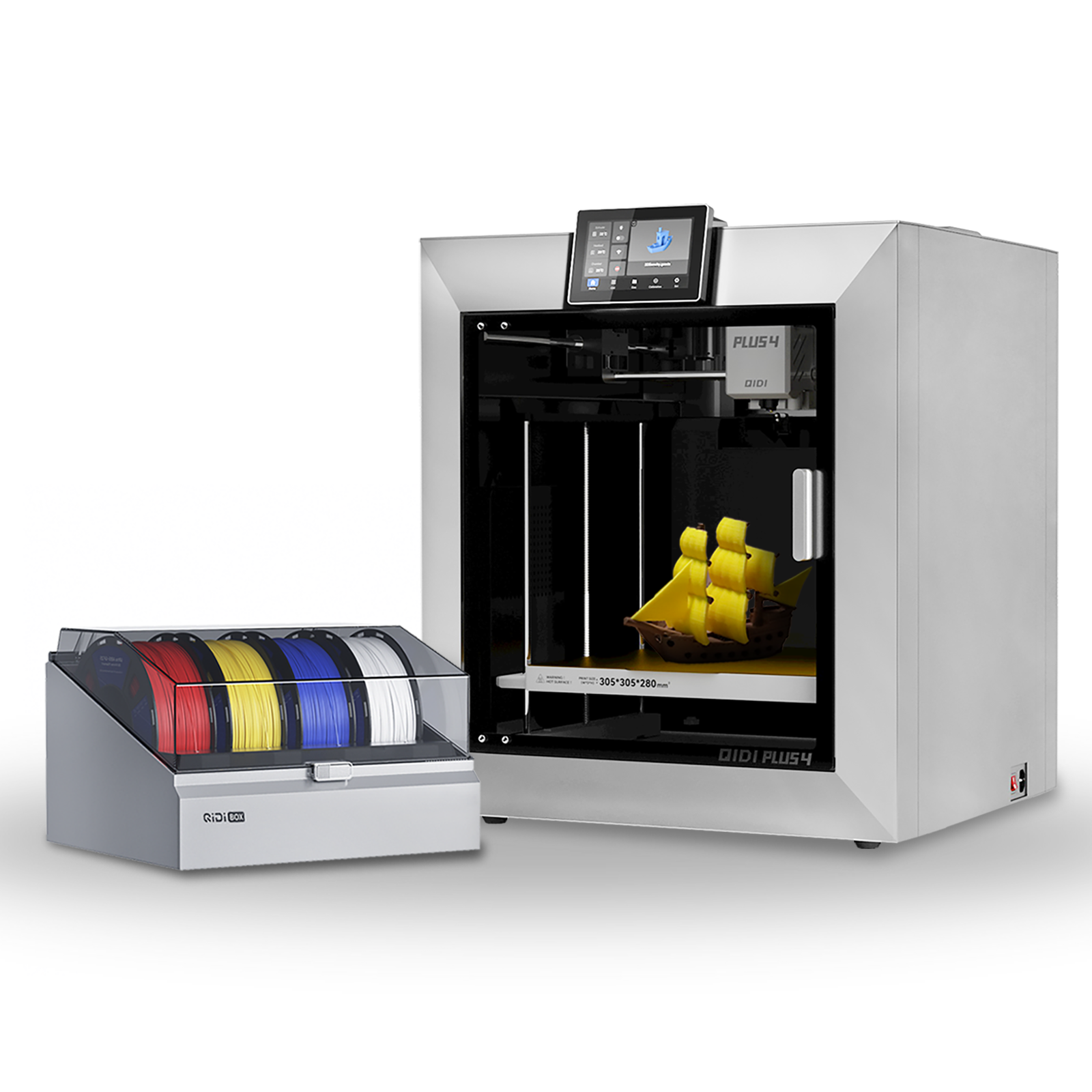 Plus4
Plus4
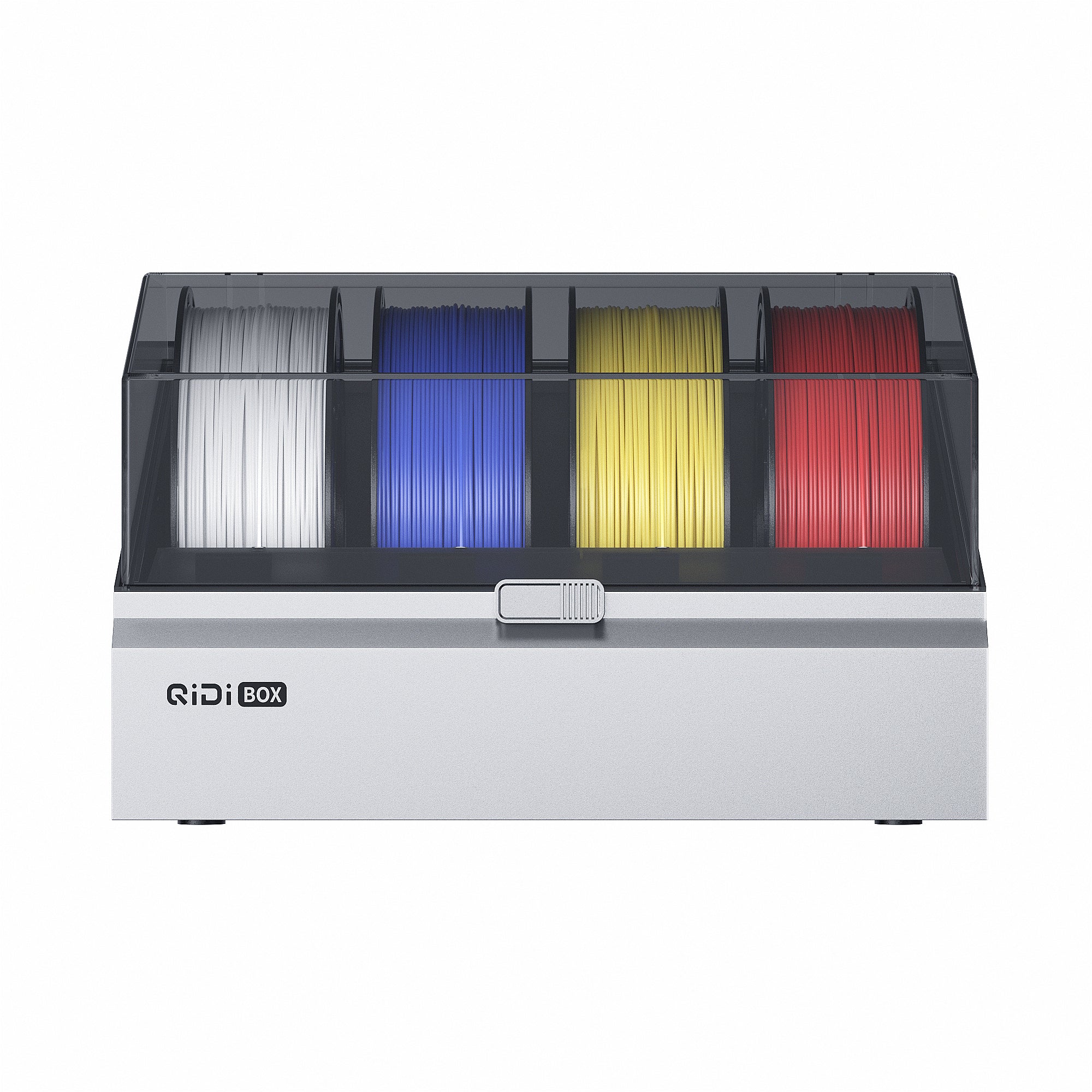 Bosca Qidi
Bosca Qidi
![[Qidi X-CF Pro, speziell für den Druck von Kohlefaser und Nylon entwickelt] - [QIDI Online Shop DE]](http://eu.qidi3d.com/cdn/shop/files/3034a1133efe01daba919094b70c6310.jpg?v=1750300120) Q1Pro
Q1Pro
![[Qidi X-CF Pro, speziell für den Druck von Kohlefaser und Nylon entwickelt] - [QIDI Online Shop DE]](http://eu.qidi3d.com/cdn/shop/products/X-MAX3-3D-Printer-02.png?v=1750300138) Max3
Max3
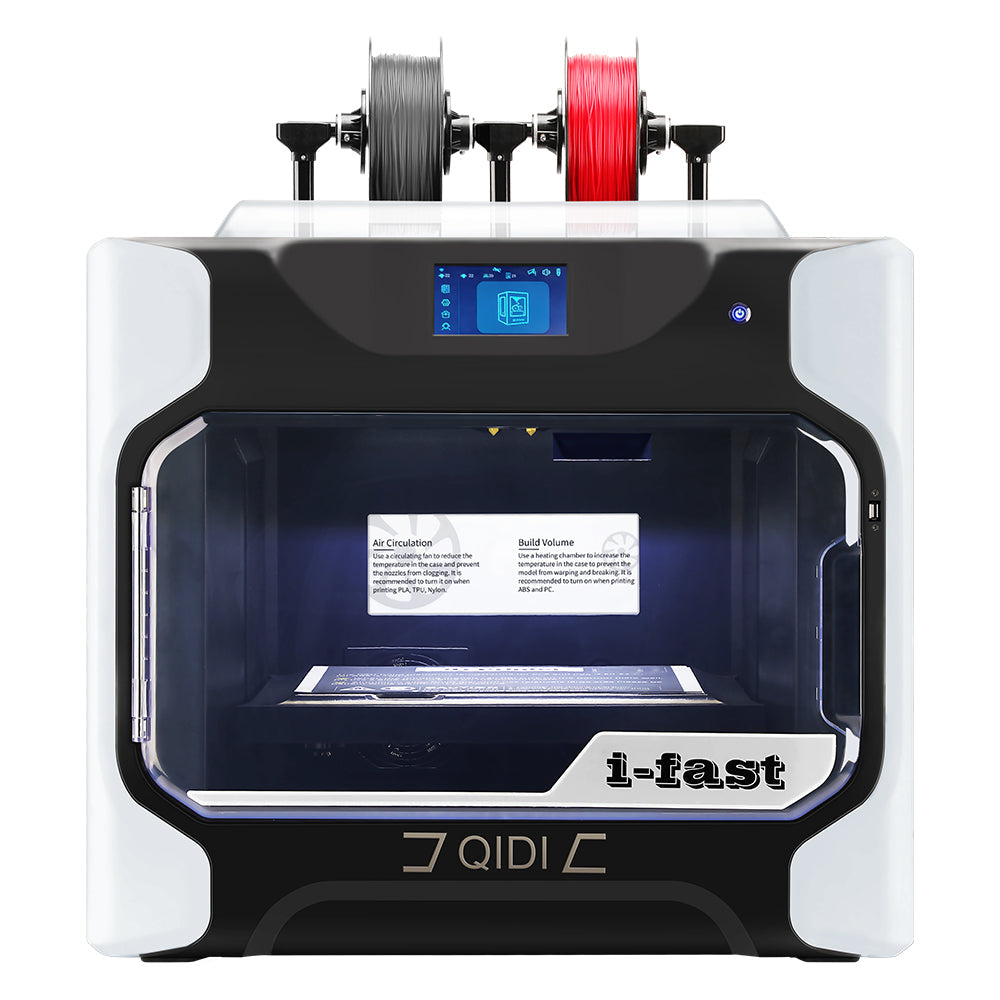 I-Fast
I-Fast
